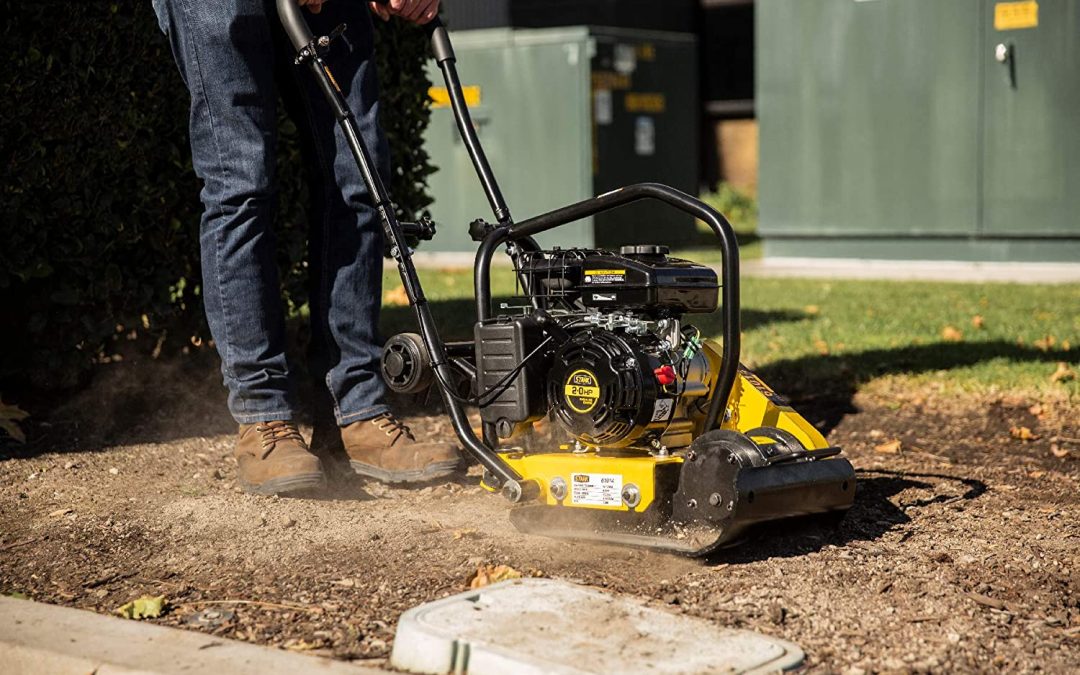Construction projects require various types of equipment to ensure efficient and timely completion. One such essential tool is the plate compactor, a versatile machine used to compact soil, gravel, and other materials. In this article, we will explore how plate compactors can significantly enhance construction efficiency and why they are a valuable asset to any construction site.
What is a Plate Compactor?
A vibratory plate compactor, often known as simply a plate compactor, is a specialized construction tool used for compacting various materials such as soil, sand, gravel, asphalt, and similar substances. It consists of a heavy steel plate mounted on a base with an engine-driven mechanism that generates rapid vibrations.
Boosting Construction Efficiency:
Improved Soil Compaction:
Proper soil compaction is crucial for the stability and longevity of any construction project, whether it’s building foundations, roads, or pavements. Plate compactors effectively remove air voids and increase soil density, resulting in a stable base that can withstand heavy loads. This prevents settlement issues in the future and reduces the need for costly repairs.
Time and Labor Savings:
Plate compactors are efficient machines that can cover large areas quickly. Compared to manual compaction methods, such as using hand tampers, plate compactors can significantly reduce the time and labor required for compaction tasks. With faster completion of compaction work, construction projects can progress at a quicker pace.
Versatility:
Plate compactors come in various sizes and configurations, making them suitable for different construction tasks. Whether it’s compacting soil in tight spaces or working on expansive areas, there’s a plate compactor model to meet specific project needs. This versatility ensures that construction teams can use the right equipment for each task, maximizing productivity.
Increased Density and Stability:
The high-energy vibrations produced by plate compactors allow for denser compaction compared to other methods. This increased density enhances the load-bearing capacity of compacted materials, making them ideal for constructing durable and stable surfaces. As a result, the finished project can better withstand heavy traffic, environmental stresses, and adverse weather conditions.
Cost-Effectiveness:
While plate compactors represent an initial investment, the long-term cost savings they offer make them a cost-effective choice. With improved compaction, construction materials are used more efficiently, reducing the need for additional materials. Additionally, the time saved through faster compaction means reduced labor costs and earlier project completion, resulting in potential savings.
Minimized Environmental Impact:
Efficient compaction using plate compactors reduces the need for excess material use and excavation. By compacting the soil properly, construction teams can minimize the impact on the surrounding environment. This is especially important in projects located near environmentally sensitive areas or in urban environments where minimizing disruption is crucial.
Conclusion:
Utilizing plate compactors in construction projects can result in substantial enhancements in efficiency, cost-effectiveness, and overall project outcomes. From improved soil compaction to time and labor savings, these machines offer a range of benefits that contribute to the success of any construction endeavor. Investing in quality plate compactors and ensuring their proper use can lead to better-constructed structures, reduced maintenance needs, and increased client satisfaction, making them an indispensable tool for construction professionals.

